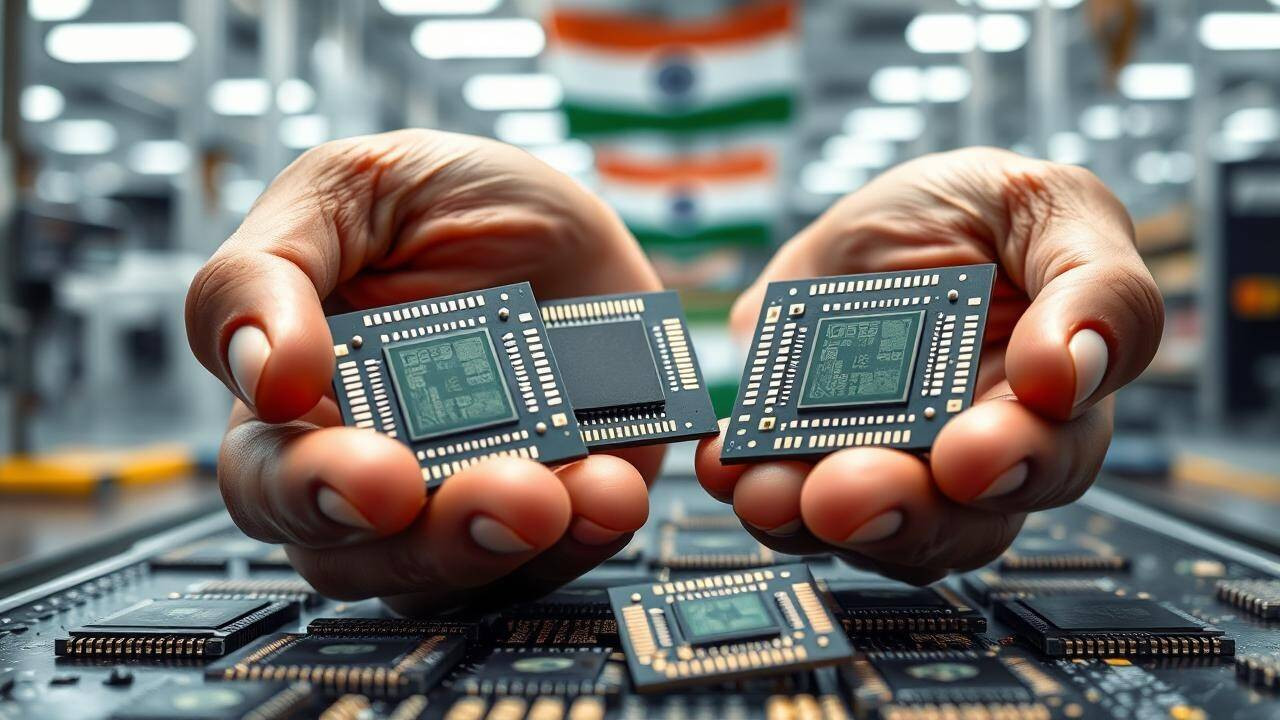Prime Minister Modi highlighted India’s renewed focus on semiconductor manufacturing during his Independence Day address, lamenting past missed opportunities. He announced the imminent arrival of a ‘Made in India’ chip and the establishment of six semiconductor units, with four already approved.
India’s Semiconductor Dream: Can Modi’s Deadline Spark a Chip Revolution?
Prime Minister Modi, in his Independence Day address, didn’t just wave the flag; he planted a bold stake in the ground. He declared that India would be producing its very own “Made in India” semiconductor chip by the end of 2025. That’s not just ambitious; it’s a moonshot aimed squarely at transforming India’s technological landscape.
For years, India has been heavily reliant on foreign sources for these crucial components that power everything from our smartphones to our cars and even the complex systems that underpin our infrastructure. This dependence creates vulnerabilities, both economic and strategic. A domestic semiconductor industry would not only reduce reliance on overseas suppliers but also unlock a new wave of innovation and economic growth.
But can India really pull this off in the next 18 months? The semiconductor industry is notoriously complex, capital-intensive, and dominated by a handful of global giants. Building a chip fabrication plant, or “fab,” requires billions of dollars in investment, cutting-edge technology, a highly skilled workforce, and a reliable ecosystem of suppliers.

India’s journey to becoming a semiconductor manufacturing hub is far from starting from scratch. The government has been actively courting international chipmakers with attractive incentive packages, including financial assistance, tax breaks, and infrastructure support. The goal is to create an environment that is conducive to attracting foreign investment and fostering domestic innovation.
Several factors are working in India’s favor. First, the country boasts a large and growing pool of engineers and technologists. While not all are specifically trained in semiconductor manufacturing, the raw talent is there, and with targeted training programs, the talent gap can be bridged.
Second, India’s domestic market for electronics is booming. The increasing demand for smartphones, laptops, and other electronic devices creates a ready market for domestically produced chips. This can provide a significant advantage for early-stage manufacturers.
Third, geopolitical factors are also playing a role. The ongoing trade tensions between the US and China, along with concerns about supply chain security, are prompting companies to diversify their manufacturing locations. India is well-positioned to benefit from this trend, offering a stable and democratic alternative.
However, significant challenges remain. One of the biggest hurdles is securing the necessary technology and expertise. Building a state-of-the-art chip fab requires access to highly specialized equipment and processes, many of which are closely guarded secrets. India will need to forge strong partnerships with leading semiconductor companies to acquire this technology. This is crucial as, unlike software, creating a semiconductor is a hugely specialized process.
Another challenge is creating a robust ecosystem of suppliers. Chip manufacturing relies on a vast network of companies that provide everything from raw materials to specialized chemicals and equipment. India will need to develop a strong domestic supplier base to reduce reliance on foreign sources and ensure a stable supply chain.
The government’s ambitious plan involves not just attracting foreign investment but also nurturing domestic semiconductor companies. This will require providing financial support, access to technology, and a supportive regulatory environment. Perhaps, for instance, by simplifying the environmental compliance aspect.
Furthermore, workforce development is essential. India will need to invest heavily in training programs to create a skilled workforce capable of operating and maintaining chip fabs. This will involve collaborating with universities and vocational schools to develop specialized curricula. It may also mean incentivizing companies to set up in regions that can be revitalized by a strong manufacturing industry.
Modi’s declaration isn’t just a political statement; it’s a call to action. If India can successfully navigate these challenges and build a thriving semiconductor industry, it will not only transform its economy but also strengthen its strategic position in the world. As India seeks to establish itself as a global manufacturing hub, the semiconductor industry represents the perfect opportunity to lead the way.
The key lies in execution. Can India translate its ambitions into concrete results? Only time will tell, but the stakes are high, and the potential rewards are enormous. As we discussed in our recent article about [India’s Manufacturing Push](insert internal link here), this focus is part of a broader, more impactful government strategy.
In conclusion, Prime Minister Modi’s ambitious goal of producing a “Made in India” semiconductor chip by the end of 2025 is a bold move that could revolutionize India’s technological landscape. While significant challenges remain, including technology acquisition, ecosystem development, and workforce training, the potential rewards of a thriving domestic semiconductor industry are immense, positioning India as a key player in the global technology race.







